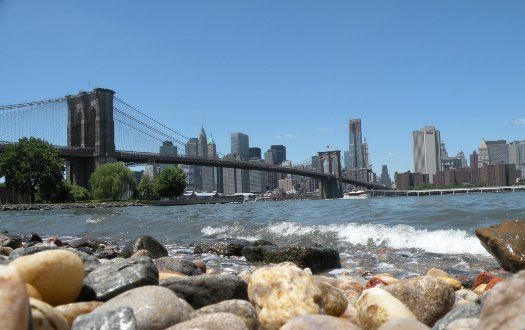
[Emily Warren Roebling]
As a lady scientist who's spent many afternoons in history of technology lectures, I'm contractually required to acknowledge Emily Warren Roebling. Today is the 167th anniversary of her birth, so it seems as opportune a time as any.
So.... basically, she was the lady that built the Brooklyn Bridge. Okay, that's an exaggeration on a couple of counts. First, engineers aren't typically the folks doing the "building." Second, she did have some help.
Emily's father-in-law was John Roebling, a prominent civil engineer. John designed, appropriately enough, the Roebling Suspension Bridge spanning the Ohio River at Cincinnati and Covington, Kentucky. His next major project would be the Brooklyn Bridge.
John's son, Washington Roebling, was a civil engineer for the Union in the US Civil War, during which he met Emily Warren (who was essentially his boss' daughter). The two married, and Washington went to Cincinnati to work under his father. Washington then worked as assistant engineer on his father's Brooklyn Bridge.
And then things happened. 19th Century things.
First, John Roebling stubbed his toe on a tugboat. It was 1868, so he died of tetanus shortly thereafter. Washington took over as chief engineer. He was heavily involved in the complicated work of designing and building the bridge's massive towers, and spent a good deal of time mucking around the bottom of the East River. By 1872, he had developed a severe case of the bends, which made him increasingly bedridden.

[A picture of the Brooklyn Bridge, "an everlasting monument to the sacrificing devotion of a woman and of her capacity for that higher education from which she has been too long disbarred."]
The Brooklyn Bridge was completed in 1883. This leaves a healthy 11-year gap between the initial onset of Washington's decompression sickness and the bridge's opening. There was presumably no shortage of engineers on site, but Washington wanted to remain engineer-in-chief while retaining someone he trusted to be his eyes and ears.
Washington made Emily his assistant, effectively putting her in charge of supervising construction as he laid in bed in New Jersey. She learned not only engineering, but the art of politics in over a decade (a Nineteenth Century decade) of prominent work on the Brooklyn Bridge.
When the bridge was dedicated, Washington reportedly told his wife, "I want the world to know that you, too, are one of the Builders of the Bridge."*
Perhaps the most direct acknowledgement of her work came in a speech from then U.S. Congressman Abram Stevens Hewitt, who proclaimed the Brooklyn Bridge: "an everlasting monument to the sacrificing devotion of a woman and of her capacity for that higher education from which she has been too long disbarred." That said, Emily still doesn't really get as much credit as she deserves.
Unfortunately, I've pretty much exhausted my personal knowledge of Emily Warren Roebling (but see this). As a lady scientist married to a woman who got her engineering degree in the 21st Century, I think Emily Warren Roebling's an important figure. Engineering while female is difficult these days. Supervising (irrespective of whether it was in the guise of being her husband's faithful servant) one of the greatest civil engineering projects of the 19th Century is inspirational, to say the least.
Oh, and after the Brooklyn Bridge's completion, Emily obtained a law degree from NYU, and apparently focused on women's rights. So: Happy Birthday Emily Warren Roebling!
--
*My source for this and some of the other information in this post is Henry Petroski's Engineers of Dreams. The BBC also has some archived websites with information similar to what's on Wikipedia.




Shakesville is run as a safe space. First-time commenters: Please read Shakesville's Commenting Policy and Feminism 101 Section before commenting. We also do lots of in-thread moderation, so we ask that everyone read the entirety of any thread before commenting, to ensure compliance with any in-thread moderation. Thank you.
blog comments powered by Disqus